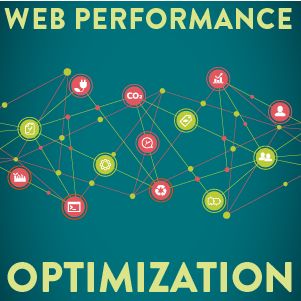Tube Rank: Your Guide to Video Success
Discover tips and insights for optimizing your video presence.
Speed Demons: Why Your Website's Performance Matters More Than You Think
Unlock the secrets of website speed: Discover why performance is your site's secret weapon for higher traffic and conversions!
5 Key Metrics to Measure Your Website's Speed Performance
In today's digital landscape, website speed performance is crucial for providing an optimal user experience. To effectively measure and improve your site's speed, you should focus on five key metrics. First, consider Page Load Time, which refers to the total time it takes for your site to fully load. A fast page load time is essential, as studies show that even a one-second delay can lead to higher bounce rates. Second, monitor the Time to First Byte (TTFB), which measures the time taken for the user's browser to receive the first byte of data from your server. A lower TTFB indicates a more responsive website, enhancing user satisfaction.
Additionally, it's important to keep track of Time to Interactive (TTI), which is the time it takes for your page to become fully interactive. A quicker TTI improves user engagement, allowing visitors to interact with your site features without delays. The fourth metric, First Contentful Paint (FCP), measures how quickly visible content appears on the screen, giving users a sense that the page is loading. Finally, consider Cumulative Layout Shift (CLS), which quantifies the visual stability of your page. A low CLS score ensures that elements do not shift unexpectedly as the page loads, providing a seamless experience. By monitoring these key metrics, you can significantly enhance your website's speed performance and, ultimately, its user satisfaction.

How Website Load Time Affects User Experience and SEO
Website load time is a critical factor that significantly impacts both user experience and search engine optimization (SEO). When users visit a website, they expect it to load quickly; studies show that a delay of just one second can lead to a 7% reduction in conversions. This means that slow-loading websites not only frustrate users but also result in lost revenue. Search engines like Google use load time as one of their ranking factors, which means that faster websites are more likely to appear at the top of search results. Consequently, optimizing your site for quick load times is essential for retaining users and improving visibility.
Moreover, user experience is heavily influenced by how quickly a website responds to requests. A website that loads slowly can lead to increased bounce rates, where visitors leave your site before engaging with its content. This behavior signals to search engines that your website may not provide a satisfactory experience, impacting your SEO rankings further. To enhance both user experience and SEO, consider implementing strategies such as compressing images, utilizing browser caching, and minimizing HTTP requests. By prioritizing website load time, you can foster a more enjoyable experience for your users while improving your site's search engine performance.
Is Your Site Slowing Down Sales? The Hidden Costs of Poor Performance
The performance of your website plays a crucial role in your overall sales effectiveness. When potential customers encounter a slow-loading site, their patience wears thin, leading to high bounce rates and lost sales opportunities. According to studies, even a one-second delay in page load time can result in a significant drop in conversions. This relationship between site speed and sales should not be underestimated, as it can impact not only user experience but also your brand's credibility and reputation in the market.
Beyond immediate sales losses, poor website performance can also incur hidden costs that accumulate over time. For instance, slower websites often lead to decreased search engine rankings, meaning less organic traffic and lower visibility. Additionally, maintenance costs can rise as more resources are needed to troubleshoot and manage a sluggish site. Ultimately, investing in optimizing your website's performance is not just about enhancing user experience; it’s a vital strategy for safeguarding your sales and ensuring long-term growth.